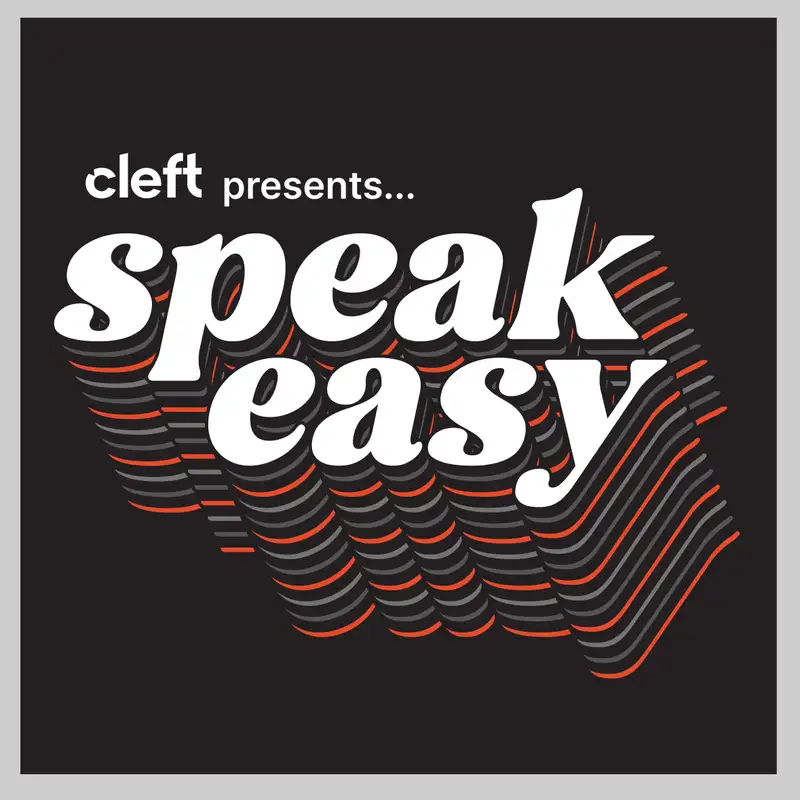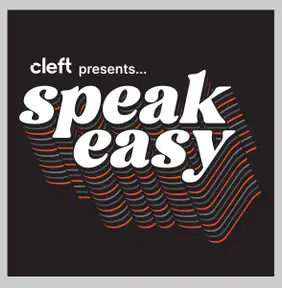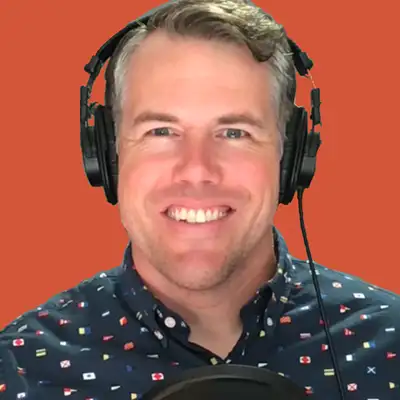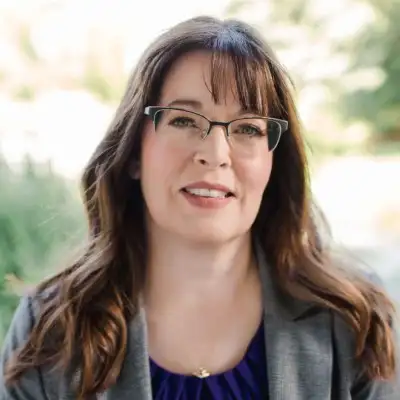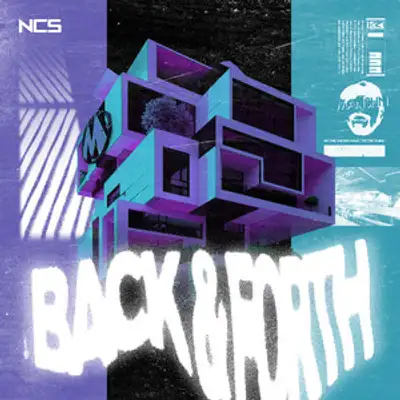Dr. Cindy Young, CJ Young Consulting
Cindy Young, CJ Young Consulting
===
[00:00:00]
Tyler Sellhorn: hello everyone. My name is Tyler Selhorn and welcome to another episode of Speak Easy, the podcast where we discuss communication, capturing our thoughts, and how we share those thoughts with our future selves and others. Managing our brains is core to 21st century work, and we're here to learn how to do it better than we did yesterday.
Thanks so much for listening. Speak easy is brought to you by cleft. The easiest way to collect your thoughts with our cross platform applications. You can simply capture your ideas wherever you are and paste them where they belong later. Today, we are blessed to be learning out loud with Dr. Cynthia J.
Young. Cindy is the founder and CEO of CJ Young Consulting LLC, a knowledge management consulting firm in Chesapeake, Virginia, before founding CJ Young consulting. Cindy retired from the United States Navy as a surface warfare officer after 23 years of active duty. Dr. Young holds several [00:01:00] professional certifications in addition to her academic credentials.
She is a project management professional, Lean Sigma, Master Black Belt, and ASQ Certified Manager of Quality Organizational Excellence. Dr. Young enjoys speaking about knowledge management, operational excellence, and process improvement with human centric knowledge management as the primary element. She has spoken at TEDx events and at a knowledge mindset conference.
What you know comes from where you sit. Cindy is the author of the Knowledge Management Memory Jogger and co authored two number one Amazon bestselling books. In addition to publishing and contributing to dozens of articles about human centric knowledge management and business. Dr. Cindy, welcome to Speakeasy.
Thank you for sharing your learning with us. We're curious. What does it mean to practice human centered knowledge management?
Cindy Young: Well, what I mean by this is that you take into account the culture. You also take into account sharing knowledge. You don't want to hoard it from people. You want to [00:02:00] make life better for the organization.
So knowledge human centric knowledge management. It's about eliminating those silos, looking at how to best help your teammate rather than hoard, make their lives easier and in an organization, make the knowledge flow smoother than it could ever be. And, you know, we talk about things like how you're going to use a SharePoint portal, if you're going to put things in there so they're findable.
Um, we also look at how we're going to mentor somebody. And we're going to use practices like on job training and about just bringing them alongside and helping them to learn how to do something. It's, knowledge shouldn't be kept, shouldn't be kept to a person, should be shared. And so knowledge sharing is my favorite part about knowledge management.
And in all the processes I talk about, transfer, capture. All that kind of stuff.
Tyler Sellhorn: [00:03:00] Okay. You mentioned capture obviously here at cleft. That's our kind of very specific focus. We're really interested in that part. And you mentioned helping that knowledge to flow easier, right.
And eliminating silos. How do we get that? Knowledge outside of someone's brain and into the places where, you know, when we're mentoring someone new or we're giving somebody on the job training, how do we capture those ideas and those thoughts in a way that's easily shared and easily implemented inside of a mentoring relationship or in object job training?
Cindy Young: Well, what you gotta do is you gotta figure out first how that person best learns. Are they more apt to learn from reading a document and then coming to you and having to explain it? Or do they just want to be shown how to do it? When you're leading them down the path of, Hey, this is how you do this process.
You know, you may have to show, share with them the explicit knowledge, which is the written knowledge first. And then you take the tacit knowledge, which is [00:04:00] your experience. And you could also bring in storytelling. But in order to do all that, you have to have captured it first somewhere and written it up so that it's there as part of the organizational process.
When you bring a person on board for their first time, It's sometimes scary. And so they want to, they want you to take care of them. And so when we onboard people, because I also work a full time job. And so when we onboard people, we want to get them to know where to find things where to find those processes and where to go if they don't know how to find them.
And, it's a long process sometimes, and other times they just need to be nudged in the right direction. But, we do a lot of that. And in knowledge management, it makes them feel a little bit more part of the team when you do that. Bringing somebody and sharing with them what you know, makes them feel a little better about how they're, you know, How they're doing because they know they can rely on you [00:05:00]
Tyler Sellhorn: when you mentioned human centered knowledge management.
And I hear you saying things like mentoring, right? And you're thinking about a person to person kind of relationship inside of that. I, I hear you rhyming with other guests on the podcast. And it's so interesting to just be observing those common thoughts and ideas you started with the idea that it ought to be written down.
Right. And that we really need to turn some of that tacit knowledge into explicit knowledge. I guess maybe how, what is that process like for you, just specifically you, Cindy, when you're thinking about building a relationship, a helping relationship with someone that's new. Or someone that you're trying to teach a new process to, how do you get the things that are in your brain written down?
What, how does that process work?
Cindy Young: Just like you said, I write them down. Um, okay. I write them down, I do a [00:06:00] workflow. If somebody doesn't know how something is done, like every week I gather, let's say, example, I do a weekly report. If I'm going to be on travel, usually I do the weekly report at night, but I have some upcoming travel that's personal that I'm going to want somebody else to do the weekly report.
So what I'm going to do is I'm going to share with them previous weekly reports. They have an example. And I'm going to talk to them about weekly reports and say, well, this is what we look for. And. We only put this type of information in there that supports a contract to keep it concise.
And then I'm going to have them do like what my old boss did before he retired is he had me do some sample weekly reports for him. So a couple of weeks before he left, I was doing the weekly report. So I got practice doing them. And then I was able to write down how I did things. And now I have a spreadsheet.
Because I have, as of Monday, I'm lucky, as of Monday I'm going to have a 12th person working for me. So, I have 12 weekly reports [00:07:00] I have to gather. And I have to organize it, and so there's a process of how I do it in my head, but I've written it down. And once, once they do it, I'm going to ask them for feedback.
And that's a lot of what I used to do in the military. We did training events, and we'd do the same thing. We would write a process out how we're going to conduct the exercise. That's it. And then we put it through action, put it in action. We practice it. We'd have a process written down and we'd have other people look at it too and say, does this make sense to you?
And so then, once they get into it, then they can take their ideas and maybe add to them. So I'm hoping that when I come back from my personal time off, that I'm going to have some other ideas, make, maybe make the process easier, because I don't want to be the only one knowing how to do this process.
And that's how organizations should be looking at it. They don't want to be the, uh, the only person. To do it be one person that may be leaving the company in a year or may get sick and may not be able to do their job or they just want to be [00:08:00] able to take some time off. There's, there is a framework to it.
You know, to go through the TACIT to explicit back to TACIT and it's never ending. It's always going to be, somebody's always gonna have a better idea and you want to take those ideas and see what you can do with them. So some organizations will have one person in charge of the process and they'll be gathering the information there's all all sorts of things you can do to make it Friendlier to the person.
Tyler Sellhorn: I think it's awesome to hear you saying Okay, first, I'm going to map out the workflow, right, and it usually has these sources that we're going to draw from that we're going to use examples that we're going to generate samples that we're going to practice the process before we even attempt to do it in production, as it were, right, and that we're going to solicit feedback even before we begin, right?
I think that's so [00:09:00] interesting to hear you. Mirroring the development process and software, right. As you think about how you capture and express knowledge, like a weekly report. Um, and even like the iterative idea that you're saying, but we're going to take that feedback and we're going to make it better next time.
Right. It's not static. It's, it's dynamic.
Cindy Young: But it's actually like the agile process you hear about in project management. Right. You know, if you think about it, a lot of people, if you're not in project management and you don't use Agile as a framework, just think about your cell phone and how you get your updates.
You know, those people producing those updates, they're using Agile framework to give you a better product each time. That's why you get your security updates, because they've gone through it and they've found things to make things work better. And so they're going to give you a little bit so you have a thing to start with, but they're going to keep improving it as new threats come and as new processes come, they're going to improve it.
So what you like doing [00:10:00] on your phone might actually improve on down the road. But there's such small pieces of feedback that you maybe not realize how big of a jump it actually is. And you know, that's what I'm really hoping with my people is that I'll make it better so they can start. Feel comfortable about giving me better ideas.
Tyler Sellhorn: Yeah, I think staying invitational to invite those contributions from others to say Um, this, this, uh, example, right, is the current version, right? And the next version is going to be better because you were involved and you went through it and you brought your influence to bear on this process. I guess maybe that's something that I'm curious to learn from.
In my own experience, I know that one of the ways that I've eliminated silos or broken down some of those barriers between groups. Is to really lean into the experience of a new person, right? To say where are we falling down? [00:11:00] What is something that we've been doing and always been doing? And doesn't make sense to you.
We only get to be, you only get to be a new person once in our organization. And so we want to gather as much as we can from you with your fresh perspective and your innovative ideas, because. You're not doing it the way we've been doing it, right? We've got stuck in a rut. I guess maybe that's what I'm curious to learn more from you about is how do we eliminate silos using new people or using the processes that you've built up over time?
Cindy Young: In knowledge management, I think the best way to do it is actually use people who've been there a little bit past the initial part, because they know the people in the other silos. And one way we can eliminate those silos is to have people come and help them to eliminate their problems.
Because you want to make you a problem solvers. And so say you have somebody in business operations and somebody in finance and somebody in travel. And I've used this example on a couple other discussions I've had. But [00:12:00] if you use a person who works in travel and they're trying to coordinate flights, you have somebody in finance that says, why do you need so much money?
Well, this flight is costing this amount of money. This is our preferred carrier. And so we have to get this person here, there in the, along these timelines. So business operations saying, well, why are we spending so much money for this? And then finance can say, well, I've talked to travel. And this is what's going on.
And so maybe later on the online business operations can think about that when they're looking at their budgets and giving, giving travel a little more leeway to do things. so you'll have bigger, more involved problems. And you want to have knowledge managers or people who act as knowledge managers to help solve problems.
And it also helps to increase the discussions across the the areas, but it improves the cultural organization, but also improves the relationships [00:13:00] between the different organizations organizational silos. You want to get rid of the silos, but still recognize that business operations going to have to do some things who had business operations does, but, the way they support each other sharing what knowledge I have, knowing things are coming up, knowing how their processes work, knowing how to affect somebody else.
But that's really, that's why I would go to somebody who's already been there because they have some familiarity with what's going on now. You can use a brand new person. Just say, hey, does this process make sense? And then they move on. But, as far as living in silos, choosing better with somebody who's newer or not as new, but new were.
Tyler Sellhorn: Okay. One of the themes that I'm hearing you say as you talk about the relationships between departments and you're talking about how do we break down silos, I'm hearing you say that. Human centered knowledge management is almost maybe a better or like an adjacent phrase. Maybe it's not better.
[00:14:00] It's just a phrase that's there next to a human centered is human partnered. Right. Knowledge management.
Cindy Young: Yeah. I hadn't heard that before, but I like that.
Tyler Sellhorn: Okay. Hey we're, we're iterating live. Okay. And I guess maybe that's what I'm wondering about is when you said this phrase where the knowledge managers in our organization or the people who act as a knowledge manager, what are those actions that, that demonstrate someone is acting as a knowledge manager or is a knowledge manager themselves?
Cindy Young: Well, just so you know, knowledge managers, that's just a name people put on you to do things. A librarian is a knowledge manager. A receptionist is a knowledge manager. It's just what you do with that knowledge you have. If you want to, if you want to look at who is a knowledge manager, usually that's by task.
If you hire somebody to be a knowledge manager, you're hiring somebody specifically for that purpose that's going to do 100 percent of the time. A person who acts as knowledge manager, maybe somebody that. [00:15:00] Your organization can't afford to hire somebody 100%, so they're having to be a collateral duty.
And really, everybody should be a knowledge manager of some sort. But this way they're being the person that can integrate the processes, integrate the different areas. Because knowledge management, they have the three legs of process, people, processes, technology, same as most everything else.
But when you're working with the people side of it, you got to take into account that, hey, They're going to have to integrate with other people and understand that maybe sharing resources maybe working with the same customers. You may be supporting those same end state, but. You've got to just find a way to, to not hoard that knowledge to yourself.
And so you either share it, through discussions or transfer it by sending them a document that you use to make something better.
Tyler Sellhorn: Okay. Right off the top, you talked about hoarding knowledge, right? And then you just mentioned that the key activity of knowledge [00:16:00] managers. or someone who is acting as a knowledge manager is to integrate information.
And I guess maybe I want to put those two things as like the poles on a spectrum. Yeah. Right. I, I, how do we avoid those silos and that harshness? Is like a, you know, a bad, bad vibes, bad, like, this is what's, what's not good. Right. And we're saying on the other side is okay. We want to integrate. I'm wondering if there is a.
A Goldilocks zone, right? Because when we think about people that are existing inside an organization, sometimes that information represents, I'm important because I know this, right? And I want to teach you, right? And I want to show you, I want to give this to you. How do we help people to see that?
When we share that power, right, it causes it to expand for everyone because I've [00:17:00] experienced that myself. Like you talked about this through our conversation, like moving from hoarding to sharing. But how do we like embrace the mindset that, that keeping information for ourself reduces the amount of power that I individually have.
Because if I hold on to it, it won't be able to grow past me. And that, that group mentality, that group mindset, I just like, we've just full disclosure, every conversation becomes this meta conversation with me. So sorry if that's like way too esoteric, but I'm curious to hear you think about that part of the human centered aspect of knowledge management is how do we invite people to consider sharing more?
So that they get back more themselves.
Cindy Young: Well, one of the things I think of is, one, you could be a little bit forceful on this and require it as part of your performance. It becomes part of something you're great on at the end of every year before you get your pay raise. [00:18:00] That's, that's the hard part right there is how are you going to hold people accountable for it, but you can also make it part of the culture, hey, our organization before they even join our organization believes in making everybody available to learn from each other, but also to help each other grow.
Because. When I was in the Navy, one thing we did all the time is we talked to each other to stay awake. Quite honestly, when you stand a lot of watches from two o'clock to seven o'clock in the morning, you get very tired. And so we tell sea stories, we talk about experiences, we share that experience.
And that makes people, learn more, but they also get real world updates and real world experiences which make them better. And when you have more people that promote because of what they know and what you share with them. It kind of, kind of gets in your mind that, hey, I'm, I'm good.
I'm doing a good job here. And it also opens the [00:19:00] door to being able to promote. And like I said before, being able to take a vacation without getting a phone call in the middle of your vacation. Because I really, as a manager, I really don't like doing that. I don't like calling somebody and I, I've out now told people I will not call them.
They're on vacation. They're on their PTO. Even if it's just one day PTO that's their time. And I tell people also that if they call me, I will answer them, but I won't answer other people. I'll just answer my team directly. But it's very important that, that they see the benefit, that they understand that you're helping somebody and that's going to help you on the road.
It may not happen tomorrow. It may not happen next week, but it may happen. And they gotta look at it. But they're also being seen as a helpful person. You never know what's gonna come around the block for you if you help somebody today, what's gonna happen to you next week, next month, next year.
Tyler Sellhorn: Okay, [00:20:00] Cindy and I are inviting you to be able to have a fully released vacation time away by releasing that information that you're holding inside your brain, capture those thoughts, capture those ideas and write them down, right? Give them away. So that you can receive back that fully disconnected moment of your vacation, right?
Not, not just that, but even when you're in the organization, how do you go out and do new things? How do you go out and make it possible for you to iterate and improve? Right? You've got to start from a shared reality that says, Okay, we've got this set. This is sorted, right? Let's go on and do the next thing together.
And then just like you say inviting people further up and further into the organization by giving them that information so that we can grow and that we can become better together. Oh, and thank you for the invitation to stay awake together by sharing information and stories and, you know, Our own experiences with one another.
I have also been a [00:21:00] sailor on a watch not as, you know, thank you very much for your service to the United States, but I've done that, you know, on my own boats. I've got my nautical stuff here for the listeners slash watchers where we're publishing this visually, of course you can see.
All my nautical tchotchkes in the background. But yeah, I guess maybe I want to invite us to conclude here for a moment. And I want you to tell us, Cindy, what's the one or two or the first thing that we want to encourage people to do when they are looking to become more human centered with knowledge management?
Cindy Young: That's a good question. I'll tell you one thing that I do all the time. And with my team, my full time job is that I always work with a forceful backup in mind. I want to have somebody that can help somebody else do their job better or do their job easier. And so I require my team to look at as forceful backups not just think about their job only.
Think about, hey, if I ever [00:22:00] wanted to move to a different part of the organization, How would I, how would I do this? And would I be able to have somebody else ready to take my spot? And so recently that came up in my organization. I'm now hiring a third person because our contract is growing a little bit.
So I'm hiring a third person to do a specific job on a specific system. And while that's increasing the workload a little bit, it's given me the opportunity to have my personnel, work around where they get to change their perspective on what they're teaching. And teaching a different audience and they really enjoy that plus it gets to open up some areas for travel for them And I you know, it's a lot better than sitting at a desk all day when you get to travel for work
Tyler Sellhorn: Well, I think that's even interesting to think about one of those, Military axioms is that if you've just got one you've got none Right, and if you've got two now, you've got the redundancy with which to be able to implement something new so that you can actually use [00:23:00] this new thing because you've got to back up you in case one fails You've got the other to use as well.
I want to say thank you very much cindy for learning out loud with us Today, we really appreciate Dr. Cynthia and her, knowledge that has come to bear today. Really appreciate you. And yeah looking forward to continuing to learn out loud with you.
Cindy Young: Oh, thank you, Tyler.
I really glad to be here. It's really fun. Blessings.
[00:24:00]
